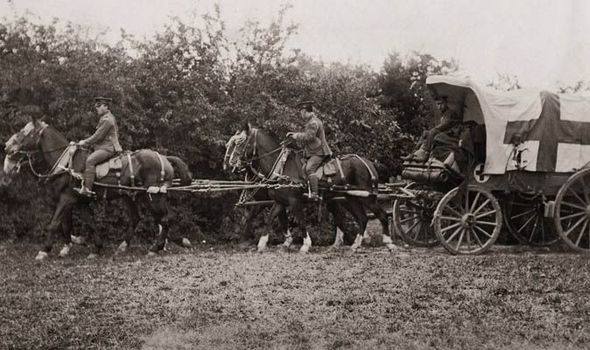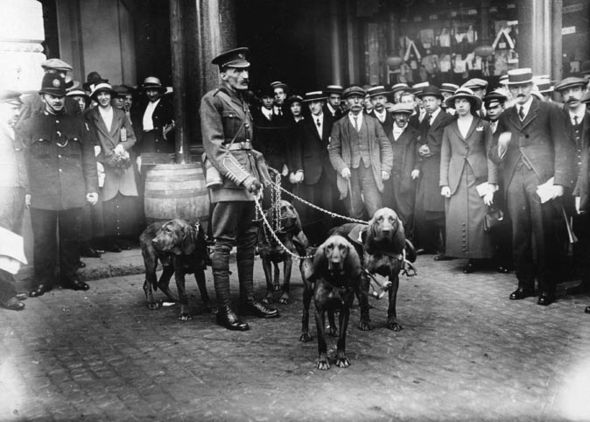It wasn’t only humans who experienced pain and suffering during WWI. Animals, including dogs, horses, and other equines, became casualties as well.

War Horse, a 1982 book written by Michael Morpurgo, which is set during the war, describes the horse as a divine creature. But during the war there were more horses and other animals sacrificed in the name of victory than at any other time in history.
The history of domestic horses began in Central Asia more than 5000 years ago and became an essential mode of transportation.
They eventually became used by the military to pull battle chariots and heavily armoured knights.
Although alternate methods of transportation were available by the time the war broke out in 1914, cavalry regiments were still very well equipped.
Extremely large numbers of horses were gathered by the military, including working animals and family pets belonging to citizens.
Three siblings wrote a letter to Lord Kitchener, the British War Secretary, begging him not to take their pony away to war. Kitchener honored the children’s request and spared the pony. But most animals were not so lucky.
The military took thousands of equines to be used for transporting artillery, supplies, and other equipment. They became enemy targets to weaken the military, injured or killed during crossfire, and sometimes suffered from disease.
The famous Flanders fields became not only filled with the bodies of fallen soldiers, but of horses as well.
Dogs were also used during the war, and were trained to perform different jobs.
Bloodhounds were used to search for soldiers who had been wounded, and other dog breeds were used to discover mines, carry messages, and lay electrical wires between trenches using spools of wire that were tied on to them.
Military groups also used dogs and other animals as mascots, such as a koala bear that was used by a group of Australian soldiers.
A Canadian officer brought a black bear named Winnipeg to England in 1915, but instead of making her experience the action of the front line, Winnie was taken to the London Zoo. It was this bear that became the inspiration behind Winnie the Pooh, who was created by AA Milne. The real Winnie passed away in 1934.
A Boston Bull Terrier by the name of Stubby took an active role with the US Army. He offered the valuable ability to warn soldiers of impending gas attacks, and ended up being given the title of sergeant by President Woodrow Wilson.
Dogs also transported carrier pigeons holding message from HQ to soldiers, which was a very important form of communication at the time because telegraph and wireless services were not reliable.

Cher Ami, a bird that successfully delivered 12 important message in 1916 during the Battle of Verdun, was presented with the French Croix de Guerre award. She managed to complete her last delivery even though she had been shot, blinded, and had lost a leg. The bird was sent back home to New Jersey and can be seen in Washington DC, preserved at the Smithsonian Museum.
Birds were also used by the Germans. They tied cameras to them and sent them to fly over the enemy lines in order to take timed pictures of the area.
Glowworms kept in jars were used in the dark trenches in order to help soldiers see letters and maps.
Back home, farmers in Britain had to find alternate animals to replace the horses that had been taken to war. Some replacement animals came from circuses or zoos, including a couple of llamas that were used for delivering newspapers.
A circus elephant named Lizzie was used in to pull carts of iron in Sheffield, her feet protected by special boots. Elephants were also used to pull ploughs in the fields in Surrey.
The wellbeing of the animals became more concerning as the war continued on. The Blue Cross and the RSPCA began to raise funds to provide care for injured animals in field hospitals throughout France, the Express reports.
It is estimated that 90% of the horses used during the war died. Although a great number died during conflict, some became injured or unable to go on and were shot. With the shortage of food, their bodies were sold to butchers.
The Animals in War Memorial located in Park Lane, London was presented by the Princess Royal in 2004 after raising £2million in order to honor that died during the war.